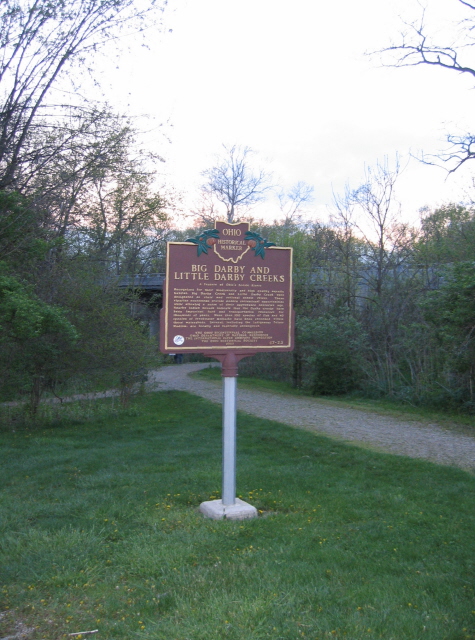
Visit one of Ohio’s 1,800 historical markers on your next outing at Battelle Darby Creek Metro Park. Dedicated in 2012, the “Big and Little Darby Creeks -A Feature of Ohio’s Scenic Rivers” marker recognizes these streams for their biodiversity and high-quality aquatic habitat. When you see the sign, stop and read a bit about the importance of these creeks. The marker is located in the parking area on the south side of the intersection of Alkire and Gardner roads (Latitude: 39.8932560, Longitude: -83.2166080). In addition to the text describing the significance of the streams, it acknowledges the Ohio Bicentennial Commission, Ohio Department of Natural Resources, International Paper Company Foundation and the Ohio Historical Society (now the Ohio History Connection) for their sponsorship of the sign. The Ohio Historical Markers program encompasses 1,800 markers that identify, commemorate and honor important people, places, things or events that have contributed to the rich history of our state.
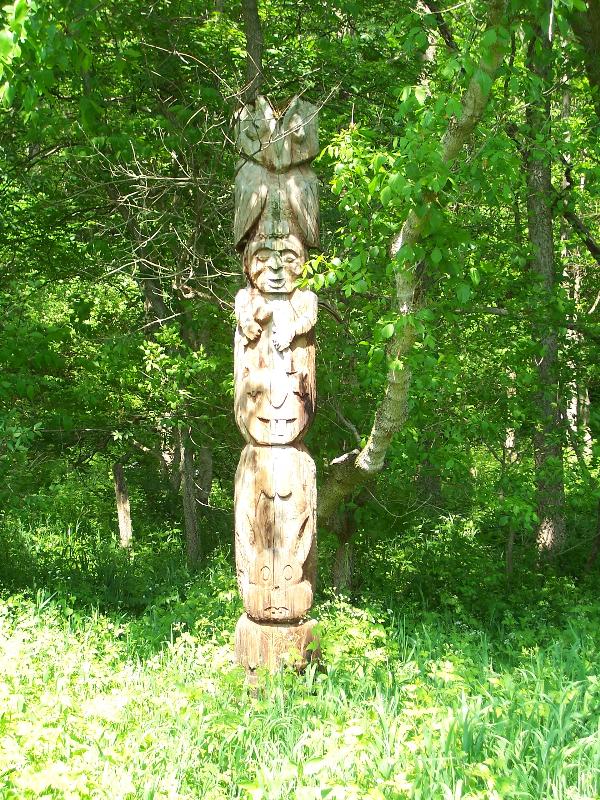
Hike about a half-mile on the Dyer Mill Trail at Battelle Darby Creek Metro Park from the Little Darby Picnic Area and you’ll be greeted by a massive owl towering a top a carved wooden pole. Check out the other images on the pole and snap a selfie. Follow the trail through the small field and up the ridge to a point where the trail goes down a steep hill to the left. At the foot of the hill, cross the dry creek bed and emerge into a picnic resting spot beside Little Darby Creek. At the fork, go right about a couple hundred yards and check out the other images carved on the pole. Named for a 19th-century grist mill, the 3.2-mile loop meanders through mostly flat terrain with a few sharp hills along the scenic Little Darby Creek.
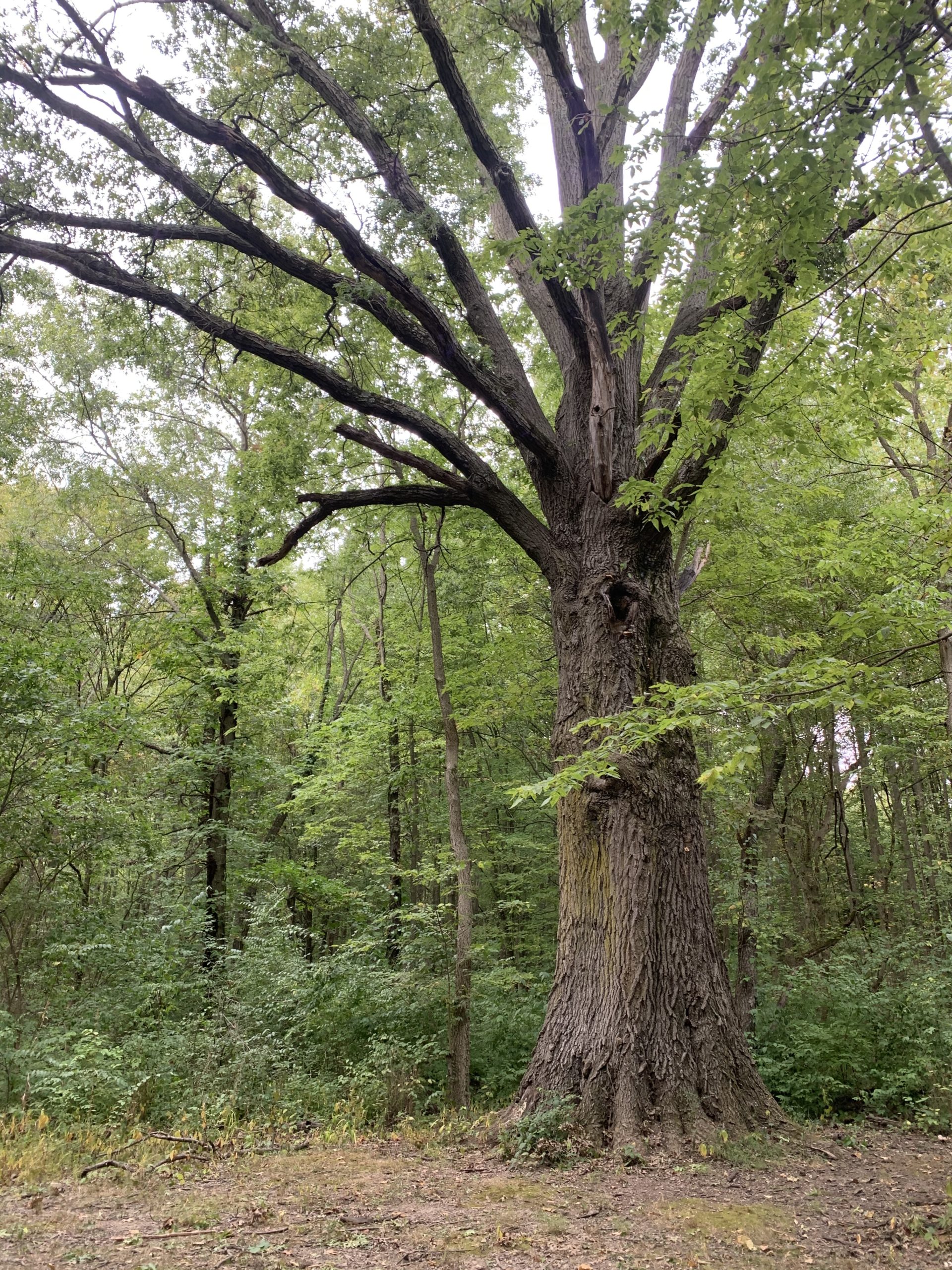
The Tall Pines Area at Walnut Woods Metro Park features dramatic stands of pines and sweetgum trees. On your next walk along the 2.6-mile Sweetgum Trail, take a short detour off the trail onto the Pin Oak Trail for a giant surprise. You’ll encounter a 110-foot tall pin oak tree that’s somewhere between 150 and 200 years old. This massive tree, with a 19-foot circumference, is the sixth largest pin oak in the state. Park manager Mindi McConnell says that trees of this size are a welcome habitat for cavity nesting birds. “They provide habitats for animals such as owls, woodpeckers, ducks, kestrels, bluebirds, purple martins and much more,” she added.
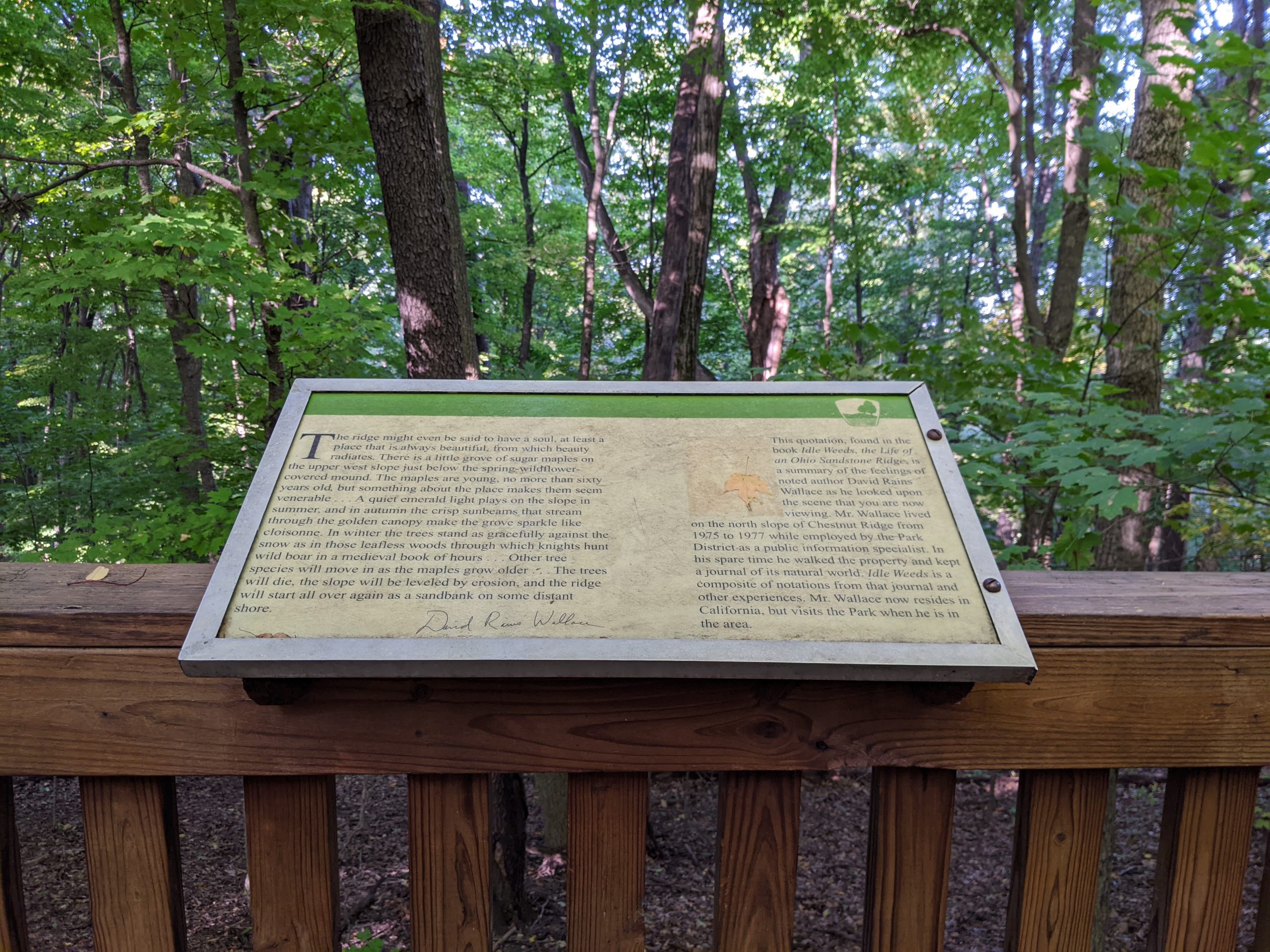
The Ridge Trail at Chestnut Ridge Metro Park includes a gradual 150-foot ascent through the woods to the top of the ridge. About a half a mile along the trail you’ll come to an interpretive sign highlighting a passage from the book Idle Weeds: The Life of a Sandstone Ridge by David Raines Wallace. The author worked for Metro Parks in the mid-to late-70s and lived in a house on the north slope of the park. The passage on the sign is a summary of his feelings as he looked out from that spot on the ridge. Idle Weeds is a composite of Wallace’s journal notes that he made about the natural world as he walked in the park and other experiences.
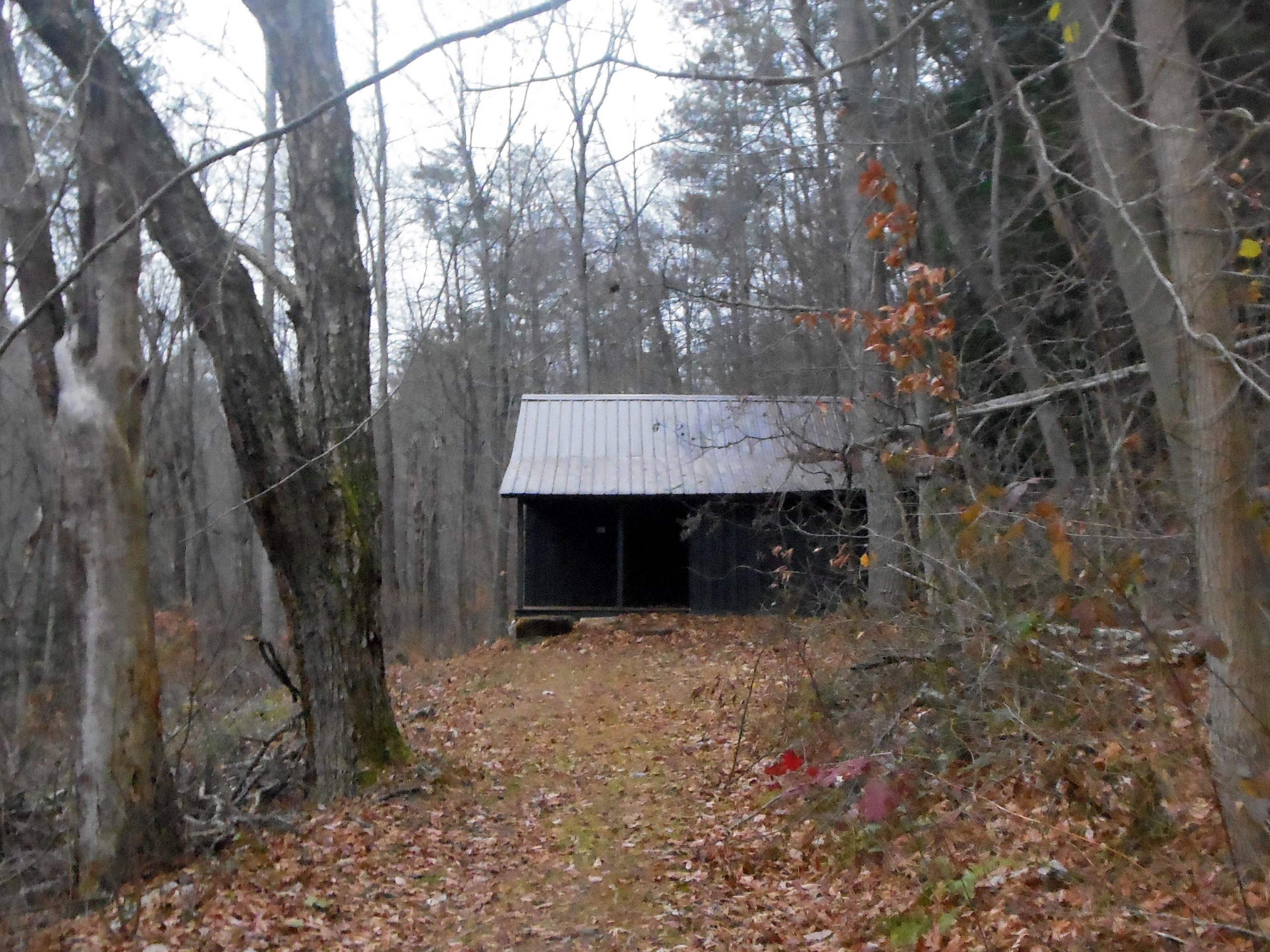
Pull into the first parking area at Clear Creek Metro Park along Clear Creek Road and hike back about a quarter mile and you’ll come upon an abandoned cabin where great minds once mingled. In 1921, Edward Thomas, one of the first commissioners of Metro Parks, purchased an 80-acre tract and named it Neotoma, after the Allegheny wood rat which he and some of his friends first discovered in the area. Clear Creek Valley has been a special scientific, scenic and geologic area that has been studied for decades, particularly the Neotoma Area. Thomas converted a rustic frame shack into a cabin where he could offer hospitality to friends and scientists conducting studies in the valley. He wrote more than 3,000 articles for The Columbus Dispatch over a 59-year period. Many of his articles were about the wildlife, plants and history of the Clear Creek Valley.

Thank you for all you do and sharing!
Thanks, Sierra!
Tall Pines area at Walnut Woods is a gem.